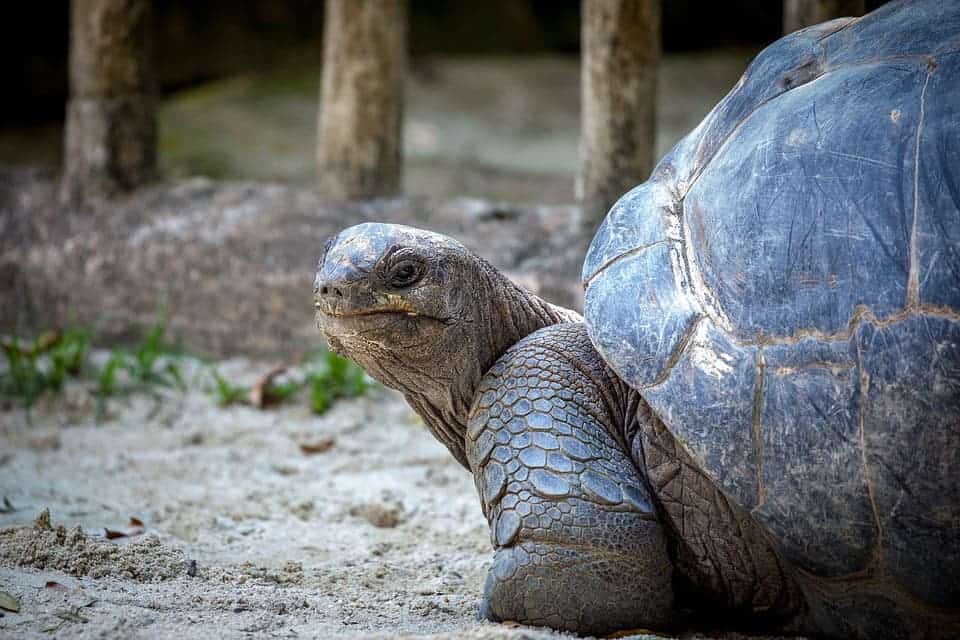Turns out that you can teach an old chimpanzee new tricks — more to the point, they’ll teach themselves.

A team of researchers from the Max Planck Institute for Evolutionary Anthropology in Leipzig and the University of Osnabrück (both in Germany) report that wild chimpanzees in the Loango National Park, Gabon, have learned how to crack open and eat tortoise. The chimps will smash tortoises against tree trunks in order to get through their tough shells. This is the first time such behavior has been observed and, the team adds, it likely is a cultural one — meaning the chimps share this knowledge inside their groups and through generations.
Breaking their fast
“We have known for decades that chimpanzees feed on meat from a variety of animal species, but until now the consumption of reptiles has not been observed,” says Tobias Deschner, a primatologist at the Max Planck Institute for Evolutionary Anthropology.
“What is particularly interesting is that they use a percussive technique [i.e. smashing] that they normally employ to open hard-shelled fruits to gain access to meat of an animal that is almost inaccessible for any other predator.”
The team observed this behavior in the newly-habituated Rekambo community. Ten chimpanzees engaged in this behavior a total of 38 times over the dry season, the team explains, a period when other food such as fruit is abundant. Tortoise-whacking seems to be a highly social activity for the chimpanzees, the team explains.
“Sometimes, younger animals or females were unable to crack open the tortoise on their own. They then regularly handed the tortoise over to a stronger male who cracked the tortoise’s shell open and shared the meat with all other individuals present,” says Simone Pika, first author of the study and a cognitive scientist at the University of Osnabrück.
The authors also detail an exceptional case in which an adult male, who was sitting on his own up in a tree, cracked a tortoise, ate half, and hid the rest in a tree fork. The male climbed down from the tree, built his nest in another one nearby, then returned the next morning to eat the leftover tortoise. This particular case suggests that chimps can plan for the future, says Pika, which is quite an exciting find.
“The ability to plan for a future need, such as for instance hunger, has so far only been shown in non-human animals in experimental and/or captive settings. Many scholars still believe that future-oriented cognition is a uniquely human ability. Our findings thus suggest that even after decades of research, we have not yet grasped the full complexity of chimpanzees’ intelligence and flexibility.”
“Wild chimpanzee behaviour has been studied now for more than 50 years and at more than ten long-term field sites all across tropical Africa,” Deschner adds. “It is fascinating that we can still discover completely new facets of the behavioural repertoire of this species as soon as we start studying a new population.”
Pika says that chimpanzees offer a unique window into our own history, and that observing them in the wild can teach us a lot about our own evolution.
The paper “Wild chimpanzees (Pan troglodytes troglodytes) exploit tortoises (Kinixys erosa) via percussive technology” has been published in the journal Science Reports.


